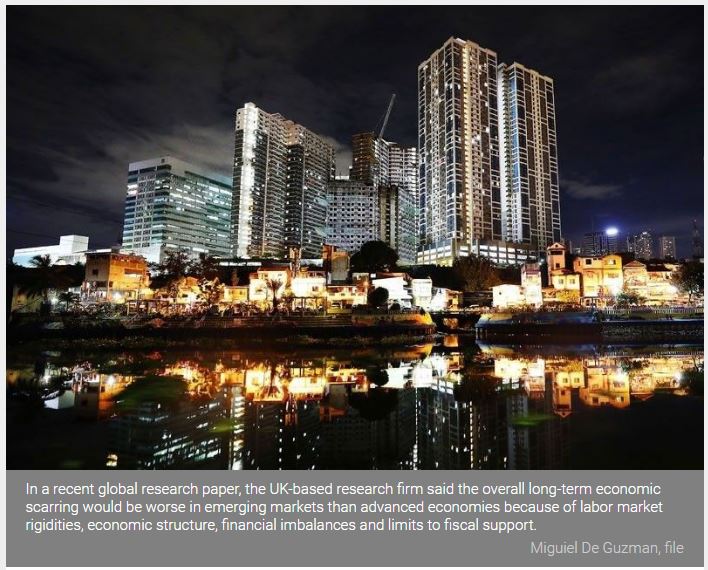Economic scarring in Philippines among worst globally
MANILA, Philippines — Long-term economic scarring in the Philippines because of the coronavirus pandemic can be expected to be among the worst in the world, according to Oxford Economics.
In a recent global research paper, the UK-based research firm said the overall long-term economic scarring would be worse in emerging markets than advanced economies because of labor market rigidities, economic structure, financial imbalances and limits to fiscal support.
A scorecard for 162 economies based on 31 metrics showed that the Philippines, Peru, Colombia and Spain appear to be the most vulnerable to economic scarring in the long-term.
In contrast, Australia, Japan, Norway, Germany and Switzerland appear to be best placed to limit long-term scarring.
“We estimate overall long-COVID economic vulnerabilities are higher in emerging and frontier markets than they are in advanced economies. It will come as a surprise to many that advanced economies are underperforming emerging economies in terms of the most important indicator: crisis-year GDP growth declines,” Oxford Economics said.
“But we think the scarring mechanisms for a given shock are bigger in emerging markets in terms of labor market vulnerabilities, economic structure, fiscal imbalances, and lack of fiscal support,” it said.
Countries seen to perform weakly in the long-term are challenged by a potential long-run hit in consumer and investor confidence, resulting in diminished investment in physical and human capital.
As such, postponed investment may have long-run impact on growth potential.
These countries also have rigid labor markets that suffer from skills mismatch and extended period of output underperformance.
A high number of total deaths and weaker health system is also associated with long-term confidence effects.
Unemployment in the country eased further in October as community quarantine restrictions were further eased, but fewer working age Filipinos were returning to the labor market.
Preliminary results of the October 2020 round of the Labor Force Survey (LFS) showed that the unemployment rate eased to 8.7 percent in October from 10 percent in July.
This was equivalent to 3.8 million Filipinos without jobs nor livelihood in October, 800,000 fewer compared with 4.6 million in July when the country was just emerging from strict lockdowns.
While unemployment in October eased from July and April, this was still almost double the pre-pandemic rate of 4.6 percent in October 2019 when only two million Filipinos were out of work.
The number of confirmed cases in the country has so far risen to more than 400,000, around 22,000 of which are active cases. The number of deaths have so far remained low at more than 8,000.
The country is expected to remain under a less severe form of lockdown next year, while awaiting the rollout of vaccines.
Source: https://www.philstar.com/business/2020/12/08/2062150/economic-scarring-philippines-among-worst-globally


 English
English




